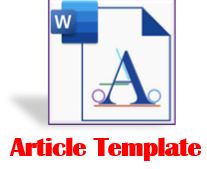Manajemen Lingkungan dalam Menurunkan Penyakit Infeksi pada Balita terhadap Kejadian Stunting di Kabupaten Solok
Abstract
West Sumatra is a province that has access to clean drinking water sources and access to proper sanitation below the Indonesian average, namely 68.83% and 52.77%, which is the sixth lowest. One of the districts that is high is Solok Regency. One of the sub-districts that is very densely populated and very heterogeneous and with a high incidence rate in Solok Regency is Kubung District, which consists of 2 Puskesmas working areas, namely Salayo Puskesmas and Tanjung Bingkung Puskesmas. The purpose of this activity is to provide knowledge of environmental management in reducing infectious diseases in toddlers against stunting to the community, cadres and sanitarians. The activity method is counseling and providing pocket books and pretest and posttest questionnaire sheets to measure community knowledge about how to manage the environment to prevent stunting. Results: there was an increase after being given counseling where 76.7% of the community already had a clean water source. The availability of toilets was 80% and 70% already used septic tanks. Conclusion: It is important to implement sanitation management in community life to prevent infectious diseases in toddlers due to poor sanitation, which can reduce the incidence of stunting in toddlers.
Downloads
References
Gerungan, G. P., Malonda, N. S. and Rombot, D. V (2013) ‘Hubungan Antara Riwayat Penyakit Infeksi dengan Kejadian Stunting pada Anak Usia 13-36 bulan di Wilayah Kerja Puskesmas Tuminting Kota Manado’, Jurnal Penyakit Infeksi dan Stunting, 392, pp. 0–5.
Chairunnisa, E. (2017) Revisi Inadekuat Asupan Vitamin D , Kalsium Dan Fosfor Pada Anak Stunting Usia 12-24 Bulan Program Studi Ilmu Gizi.
WHO (2018) Reducing Stunting in Children: Equity Considerations for Achieving Global Nutrition Target 2025.
World Health Organization (2013) ‘Childhood Stunting : Challenges and Opportunities’, WHO Geneva.
Zilda, O. and Sudiarti, T. (2013) ‘Faktor Risiko Stunting pada Balita (24-59 Bulan) di Sumatera’, Jurnal Gizi dan Pangan, 8(3), pp. 175–180. doi: 10.25182/jgp.2013.8.3.177-180.
Kemenkes RI (2018) ‘Buletin Stunting’, in Jurnal Buletin Jendela Data & Informasi Kesehatan.
Nasikhah, R. and Margawati, A. (2012) ‘Faktor resiko kejadian stunting pada balita usia 24-36 bulan di Kecamatan Semarang Timur’, Journal of Nutrition College, 1(1), pp. 176–184. doi: 10.1016/0379-6779(89)90371-8.
Dinkes, P. S. B. (2017) Profil Kesehatan.

Copyright Notice
Pernyataan Hak Cipta dan Lisensi
Dengan mengirimkan manuskrip ke Jurnal Pengabdian Masyarakat Cendikia Jenius, penulis setuju dengan kebijakan ini. Tidak diperlukan persetujuan dokumen khusus.
Hak Cipta :
Lisensi Creative Commons Atribusi-NonKomersial-BerbagiSerupa 4.0 Internasional
Hak cipta atas artikel apa pun di Jurnal Pengabdian Masyarakat Cendikia Jenius dipegang penuh oleh penulisnya di bawah lisensi Creative Commons CC BY-NC-SA 4.0.
- Hak cipta pada setiap artikel adalah milik penulis.
- Penulis mempertahankan semua hak mereka atas karya yang diterbitkan, tak terbatas pada hak-hak yang diatur dalam laman ini.
- Penulis mengakui bahwa Jurnal Pengabdian Masyarakat Cendikia Jenius sebagai yang pertama kali mempublikasikan dengan lisensi Creative Commons Atribusi 4.0 Internasional (CC BY-NC-SA-4.0).
- Penulis dapat memasukan tulisan secara terpisah, mengatur distribusi non-ekskulif dari naskah yang telah terbit di jurnal ini kedalam versi yang lain (misal: dikirim ke respository institusi penulis, publikasi kedalam buku, dll), dengan mengakui bahwa naskah telah terbit pertama kali pada Jurnal Pengabdian Masyarakat Cendikia Jenius.
- Penulis menjamin bahwa artikel asli, ditulis oleh penulis yang disebutkan, belum pernah dipublikasikan sebelumnya, tidak mengandung pernyataan yang melanggar hukum, tidak melanggar hak orang lain, tunduk pada hak cipta yang secara eksklusif dipegang oleh penulis.
- Jika artikel dipersiapkan bersama oleh lebih dari satu penulis, setiap penulis yang mengirimkan naskah menjamin bahwa dia telah diberi wewenang oleh semua penulis bersama untuk menyetujui hak cipta dan pemberitahuan lisensi (perjanjian) atas nama mereka, dan setuju untuk memberi tahu rekan penulis persyaratan kebijakan ini. Jurnal Pengbadian Masyarakat Cendikia Jenius tidak akan dimintai pertanggungjawaban atas apa pun yang mungkin timbul karena perselisihan internal penulis.
Lisensi :
Jurnal Pengabdian Masyarakat Cendikia Jenius diterbitkan berdasarkan ketentuan Lisensi Creative Commons Atribusi-NonKomersial-BerbagiSerupa 4.0 Internasional (CC BY-NC-SA 4.0). Lisensi ini mengizinkan setiap orang untuk :
Menyalin dan menyebarluaskan kembali materi ini dalam bentuk atau format apapun serta menggubah, memperbaiki, dan membuat ciptaan turunan, bahkan untuk kepentingan komersial, selama mereka mencantumkan kredit kepada Penulis atas ciptaan asli.
























